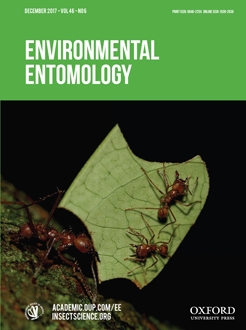To find out the potential condition for diapause induction in the potato tuber moth Phthorimaea operculella (Zeller), combination of constant temperatures (15, 20, and 30°C) and photoperiods (8, 9, 10, 11, 12, 14, and 16 h) were employed from egg to adult emergence. In addition, changes in the total phospholipid fatty acid content and cold tolerance of non-diapausing and diapausing pupae were examined. The critical daylength for diapause induction were 12.43 h at 20°C and lower temperatures that can induce in 50% of population. Moreover, the composition of total phospholipid fatty acids in the pupae revealed seven major fatty acids in both non-diapausing and diapausing pupae: oleic (26–32%), palmitic (21–29%), linoleic (18–21%), palmitoleic (4–10%), stearic (9%), linolenic (7–8%), and pentadecanoic acids (3–5%) with an increase in proportion of unsaturated fatty acids in diapause state. In contrast to increase of oleic acid (C18:1) from 26 to 32% in non-diapausing to diapausing pupae, a decrement trend from 29 to 21% in palmitic acid (C16:0) was observed at the same state. Additionally, supercooling point was observed to be significantly lower in diapausing (-22.6°C) than in non-diapausing pupae (-18.5°C) and the fresh weight of diapausing pupae was found to be significantly higher than non-diapausing ones.The significance of these findings would allow us a better understanding of interrelationship between diapause and cold tolerance.
How to translate text using browser tools
4 November 2017
Diapause Induced by Temperature and Photoperiod Affects Fatty Acid Compositions and Cold Tolerance of Phthorimaea Operculella (Lepidoptera: Gelechiidae)
Chamran Hemmati,
Saeid Moharramipour,
Ali Asghar Talebi
ACCESS THE FULL ARTICLE
It is not available for individual sale.
This article is only available to subscribers.
It is not available for individual sale.
It is not available for individual sale.

Environmental Entomology
Vol. 46 • No. 6
December 2017
Vol. 46 • No. 6
December 2017
cold tolerance
diapause induction
fatty acid composition
photoperiod
Phthorimaea operculella
temperature




